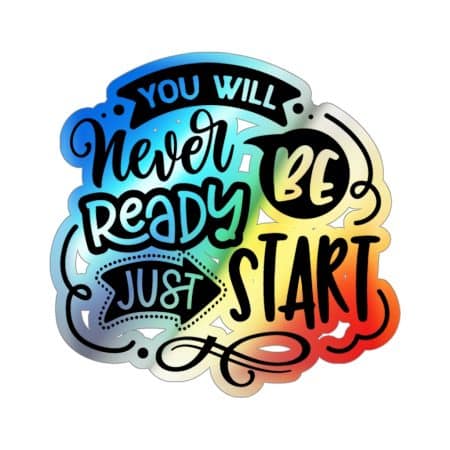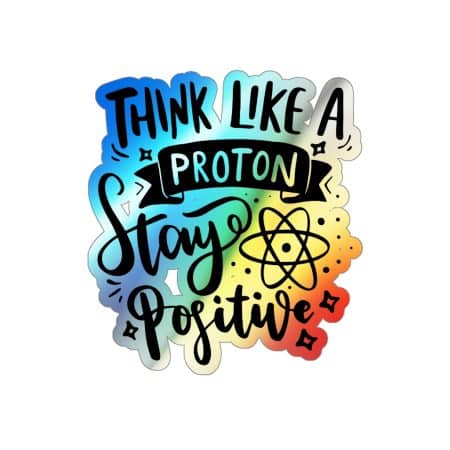You may wonder why team building comes up in conversation so often. It’s because it’s a fundamental cornerstone to improve success.
Building a team is an essential aspect of any successful organization. Groups allow individuals to collaborate, share ideas, and pool resources to achieve a common goal.
A well-functioning team can bring diverse perspectives and skills together to create innovative solutions and drive organizational growth.
However, building a solid team can be challenging. Doing it right requires careful planning, effective communication, and a commitment to fostering a positive team culture.
This blog post will explore the critical steps in building a successful team, from identifying roles and goals to promoting collaboration and resolving conflicts.

Find the right people to build your team
Why Team Building Matters Today
A well-functioning team can bring numerous benefits to an organization. Here are six critical benefits of a well-functioning team:
- Increased productivity: When team members work together effectively, they can accomplish more than they would by working individually.
- Better problem-solving: Teams bring together diverse perspectives and expertise, which can lead to more creative and effective problem-solving.
- Improved communication: Effective teams communicate openly and frequently, leading to better decision-making and more positive team culture.
- Increased employee satisfaction: Working in a positive and collaborative team environment can lead to higher job satisfaction and engagement.
- More significant innovation: Collaboration and brainstorming can lead to new and innovative ideas that might not have been possible otherwise.
- Enhanced learning and development: Team members can learn from each other and develop new skills and knowledge through collaboration and sharing of ideas.
Overall, a well-functioning team can help an organization achieve its goals more effectively while promoting a positive and fulfilling work environment for team members.
Identifying Roles and Goals
Identifying roles and goals is a crucial first step in building a successful team. Here are some key points to consider:
- Define team roles: Identify the key ones necessary for your team to achieve its goals. Each team member should clearly understand their responsibilities and how they or add value and contribute to the team’s success.
- Consider skills and expertise: As you identify roles, consider the skills and expertise required to fulfill them. Look for team members with complementary skill sets that can work together effectively.
- Establish clear goals: Setting clear and specific goals is essential for a team to be successful. Goals should be SMART: specific, measurable, achievable, relevant, and time-bound.
- Prioritize goals: Prioritizing goals is crucial for many tasks and objectives. Prioritizing helps team members to focus their efforts and work toward the most critical objectives.
- Communicate goals and roles: It’s important to communicate them to all team members. Excellent communication helps to ensure that everyone is working towards the same objectives and understands their responsibilities.
The process of accomplishing all this may take time to come naturally. However, you’ll succeed if you approach the subject thoroughly and use tools to help your assessments.
Fortunately, many collaboration tools exist, and many have generous free tiers.
Consider these two leaders:
Collaboration tools are a fast way to get all team members on the same page, especially if geographically dispersed.
Hiring And Onboarding
A. Methods for attracting and identifying top talent
Attracting top talent is essential for building a successful team. Here are some methods that can help you attract and identify top talent:
- Build your brand: A strong brand can attract top talent. Build a reputation for excellence in your industry, and communicate that reputation through social media, online job boards, and other channels.
- Use employee referrals: Employee referrals can be a great way to find top talent. Encourage your current team members to refer candidates from their networks.
- Leverage social media: Social media platforms can be a powerful tool for attracting top talent. Use LinkedIn and other platforms to showcase your company culture and job opportunities.
- Attend job fairs: These are an excellent way to connect with candidates and build your talent pipeline.
B. Techniques for conducting compelling interviews
Conducting effective interviews is essential for identifying top talent. Here are some techniques that can help you conduct compelling interviews:
- Prepare questions in advance: Prepare a list that will help you evaluate candidates’ skills, experience, and fit with your team and company culture.
- Use behavioral interviewing: Behavioral interviewing involves asking candidates to describe how they have handled situations in the past. This approach can help you predict how candidates will perform in future conditions.
- Listen actively: Listen carefully to candidates’ responses, and ask follow-up questions to clarify their answers.
- Use a panel interview: A panel interview involves having multiple team members interview a candidate. This approach can help you understand a candidate’s skills and fit with your team.
C. Strategies for onboarding new team members
Onboarding is the process of integrating new team members into your organization. Here are some strategies for effective onboarding:
- Develop a clear onboarding plan: Make sure it outlines the essential tasks, goals, and expectations for the new team member’s first few weeks and months on the job.
- Training and resources: Provide training to help the new team member get up to speed quickly and effectively.
- Assign a mentor or buddy: Assign a qualified mentor or buddy to the new team member. This person can help the new team member navigate the organization and provide guidance and support.
- Schedule regular check-ins: Schedule regular check-ins with the new team member to ensure they are adjusting well and have the resources they need to succeed.
You can build a solid and capable team well-positioned to achieve its goals using effective hiring and onboarding techniques.

Look for the perfect fit
Developing Team Culture
Culture plays a critical role in team success. A positive and productive team culture can help team members feel motivated, engaged, and committed to achieving common goals. Here are some ways in which culture impacts team success:
- Communication: A positive team culture can promote open and effective communication. When team members feel comfortable sharing their thoughts and ideas, they are more likely to collaborate effectively and make better decisions.
- Collaboration: A culture that promotes collaboration can help team members work together more effectively. When teammates trust and respect each other, they’re more likely to share knowledge and ideas, which can lead to more creative solutions.
- Innovation: A culture encouraging innovation can help team members think outside the box and develop new ideas. When team members feel empowered to take risks and try new things, they are more likely to come up with innovative solutions.
- Accountability: A culture that values accountability can help team members take ownership of their work and responsibility for their actions. When team members hold each other accountable, they are more likely to work together effectively and achieve common goals.
- Recognition: A culture that values honor can help team members feel appreciated and motivated. When team members feel recognized for their contributions, they are more likely to feel invested in the team’s success.
Team culture can impact how team members interact with each other, the level of engagement and motivation they feel, and the team’s success as a whole. Building a positive and productive team culture is essential for achieving common goals and creating a fulfilling work environment for team members.
The best way to build a positive and productive team culture is by fostering collaboration and trust among team members.

Communication and Collaboration
Both qualities are essential for team success. Here’s why:
A. Explanation of the importance of communication and collaboration in team success
Effective communication and collaboration are critical components of a successful team. Teams that communicate well are more likely to make informed decisions, avoid misunderstandings, and solve problems more efficiently. In addition, collaboration can lead to better ideas, better outcomes, and stronger relationships among team members.
B. Best practices for effective communication among team members
To improve communication among team members, consider these best practices:
- Be clear and concise: Use clear and concise language to communicate ideas and avoid confusion.
- Listen actively: Listen actively to what team members have to say and ask questions to clarify understanding.
- Foster an open environment: Create an environment that encourages open communication and feedback.
- Use the right communication channels: Choose the proper communication channels for the situation, such as email, video conferencing, or in-person meetings.
- Establish ground rules: Clear ground rules for communication, such as response times, tone of voice, and follow-up expectations.
C. Strategies for promoting collaboration and innovation within the team
To encourage cooperation and innovation, consider these strategies:
- Encourage brainstorming: Encourage team members to generate and share ideas.
- Foster a culture of trust: Build a culture of trust and respect to promote open communication and collaboration.
- Create cross-functional teams: Create cross-functional teams to promote collaboration and knowledge-sharing across different departments or areas of expertise.
- Provide opportunities for learning and development: For team members to learn new skills and share knowledge.
- Celebrate successes: Celebrate team successes to promote a sense of accomplishment and reinforce the importance of collaboration and innovation.
By prioritizing communication and collaboration, teams can build stronger relationships and achieve better outcomes.
Conflict Resolution
Conflicts between members will eventually arise. When they do, it pays to have a strategy to mitigate them quickly.
Conflict is a natural component of team dynamics. Familiar sources of conflict in teams include differences in opinions, miscommunications, competition for resources, and clashes of personalities. These conflicts can lead to tensions and a breakdown in team performance if not addressed effectively.
B. Techniques for resolving conflicts constructively and positively
To resolve disputes constructively and positively, consider these techniques:
- Understand the situation: Take time to understand the problem, including the underlying causes of the conflict.
- Listen actively: Listen to all parties involved to understand their perspectives and concerns.
- Focus on shared goals: Refocus the conversation on common goals and objectives rather than individual differences or preferences.
- Brainstorm solutions: Encourage all parties to brainstorm potential solutions and work collaboratively to find a solution that everyone can agree on fast.
- Communicate clearly and transparently: Stay consistent throughout the conflict resolution process, and ensure everyone understands the agreed-upon solution.
C. Tips for promoting healthy debate and discussion within the team
To promote healthy debate and discussion within the group, consider these tips:
- Encourage diverse perspectives: Encourage team members to share diverse perspectives and ideas.
- Establish ground rules for healthy debate: Use respectful language, active listening, and avoid personal attacks.
- Foster open communication: Build a culture of open communication and trust that encourages team members to share their thoughts and ideas.
- Use a structured approach: Use a structured approach to discussion, such as brainstorming or SWOT analysis, to ensure that all perspectives are in the conversation.
- Follow up on action items: Follow up on action items from the discussion, and hold team members accountable for their contributions.
By promoting healthy debate and constructive conflict resolution, teams can harness the power of diverse perspectives and ideas to achieve their goals.
Building a powerful team has many advantages. First, it will help you leverage the collective to achieve more personally.
Now’s the time for team building, and there are lots of tools that help. So stop back soon as we cover techniques and training to boost your team-building efforts.
Updated 11/08/2023








